The Aloha spirit is everywhere in Hawaii, even on the busy roads. When you drive your rental car on your Hawaii vacation, you should be prepared to drive with Aloha. There’s a phrase that goes, “To receive Aloha, you must give Aloha.” So, I want to share my driving tips to help you blend in with the locals and give your Aloha.
1. Allow Merging
In some cities on the Mainland, you must drive very aggressively to get to where you’re going. In Hawaii, it would be rare to encounter the driver with that dog eat dog mentality. You’ll especially notice the Aloha spirit where traffic merges. It’s all quite civil really with everyone making space for merging cars.
2. Anticipate Merging
Since merging is allowed more freely in Hawaii, local drivers have come to expect that they’ll be let into the lanes of traffic. Be alert that someone may pop their car right in front of you when that situation wouldn’t happen on the Mainland. Now the locals aren’t pushy about it, it’s just what normally encounter. On our first visit to Kauai, Andy and I noticed that when a car pulled up to an intersection from a smaller road to a more traveled highway, if the driver saw any gap no matter how small they’d pull onto the road. We termed this ‘Kauai-style’ driving and got a chuckle using this term every time we saw it happen. I’ve even heard stories of people literally stopping on the main highway to let the person from the intersecting smaller road on to the highway. Now that’s Aloha!
3. Use Your Shaka
If someone allows you to merge, move into their lane on a crowded road, or other nice driving gesture, give them a shaka by waving with your thumb and pinkie extended while all other fingers are closed. Flashing a shaka is a local way to say thank you. See this post to learn more about the shaka in Hawaii.
4. Pull Over To Allow Locals Past You
I know the scenery in Hawaii is so beautiful and can be distracting, but please glance back in your rearview mirror occasionally to see if you have a line of cars behind you. Most likely, you’ll be driving slower on the roads because they are new to you and you’re soaking in the sights. So, don’t force the locals to drive as slow as you are. They may be in a rush to get to an appointment, school, or to work whereas you are on a joy drive. Remember that you are visiting their island.
5. Lay Off the Horn
Blowing the horn at home might be a regular part of your driving routine, but that’s not the case in Hawaii. One of my friends who lives in Laie told me that you don’t honk the horn in Hawaii unless you are in an emergency.
So, these are some of the tips we’ve used to drive with Aloha in Hawaii. What other tips would you add? Do you have an interesting driving story from your visits to Hawaii? Please share your thoughts in the comments.
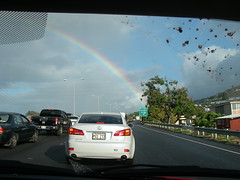
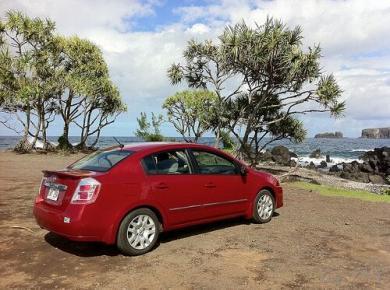
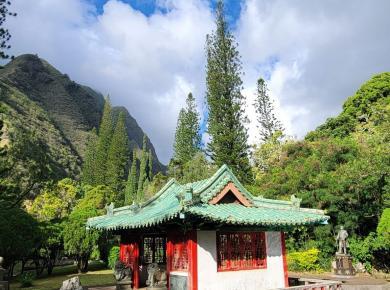
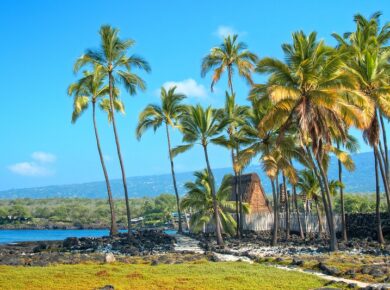
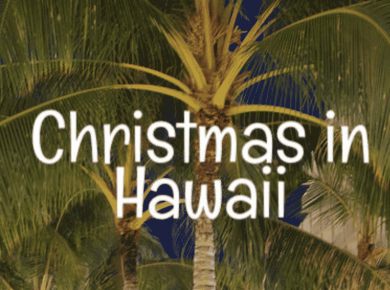
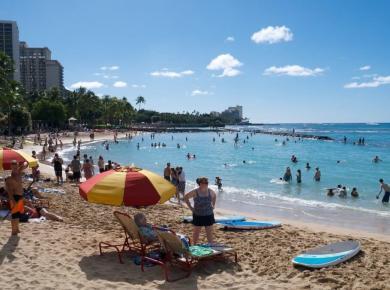
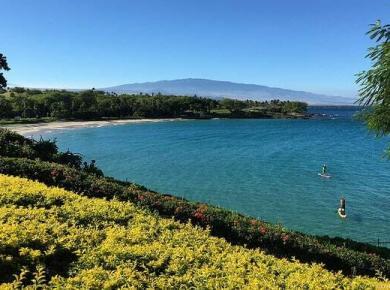
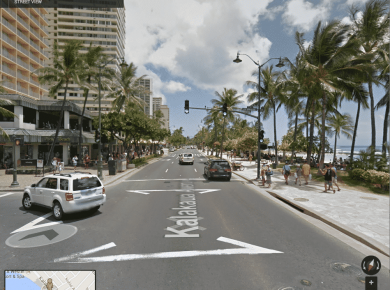
20 comments
You covered it so well, I do not have anything else to add :). My husband will thank you for this 🙂 A big mahalo for this post from me too 🙂
Liza
A Maui Blog
By the way, I voted for your blog – it’s on the lead right now – yehey!
Hey Liza – I’m glad you liked this post. I grew up in a bit of a touristy region (the Western North Carolina mountains) and I know what it’s like to have tourist driving slow and acting like they own the place. So, I’m more than happy to help educate visitors the ways of the roads in Hawaii.
Thank you so much for voting for Go Visit Hawaii! I hope that the nomination put Hawaii on the radar for potential visitors and helps to give a little boost to the economy there.
True – Do Not honk the horn. The horn is so rarely used that when you hear someone honking the horn, there must be some sort of emergency. Someone must be about to crash or someone is in serious danger.
Quite often you’ll hear a short “Toot!” – 99.999% of the time, the person tooting the horn has a huge smile on their face and is waving at a long lost, best friend and it’s a very happy situation.
** CAUTION ** Honking or tooting the horn simply because your want someone to hurry up, get out of your way or whatever… is the EXACT Same Thing as giving them the finger & challenging them to a fist fight. (Seriously – Don’t do it) If you honk at the wrong person… Hopefully your car can also double as a “Get Away Car” because you may need to leave the area in a hurry. (No joke)
Is this also what is sometimes called “kokua?” I know that term (which seems to roughly imply “cooperation” or “consideration?”) applies to things other than driving, but we saw a few signs on the Big Island — like, semi-official signs — that said something like, “Drive with kokua, mahalo.”
Kokua means to help or assist. To drive with kokua could only mean to cooperate with everyone else on the road and help everyone maintain courtesy level we all like, i.e. drive with aloha. 🙂
Chuck, they could also mean to help out someone who has a flat or who has run out of gas — on the Big Island that would be a horrible predicament to be in! It works either way.
@ Chuck – that’s a great question, so I asked my friend Evelyn to comment. She’s lived on Oahu all her life.
@ Evelyn – thank you for explaining Kokua to us in the driving context. The Hawaiian language has so many neat terms!
How about minding the posted speed limits? Please kokua in keeping the aloha spirit (and residents, visitors) alive!
Speed limits, enforcement, driver awareness and community support will help keep us safe.
Oooo good topic! Do you have one on how to be a good pedestrian, as well? So many tourists jaywalk in Waikiki, it’s just nuts.
I do have one more thing to add: If there are pedestrians in the crosswalk, and you’re turning into the crosswalk, you have to let them cross past the half of the street you are on. You can’t start turning and then zoom past them while they’re still in the crosswalk. This isn’t just to be courteous; it’s the law!
I’ll add one! Pay attention when you’re trying to pull out onto a busy road. Even if the road *appears* to be full of traffic and you think that you’ll have to wait awhile, it’s quite common for drivers to stop to allow you to enter the road. Hawai‘i drivers are very courteous in this way! If you’ve checked out and are not paying attention, you’ll miss your opportunity and miss out on that little bit of aloha!
@ Mitchell – good reminder about minding the speed limits. Hawaii’s not a place people should be in a rush for anyway.
@ Melissa – Great point about giving pedestrians the right of way. Thanks for the idea to write a post on being a responsible pedestrian. We saw a lot of police gathering near the Roys at the bottom of Lewers Street. We wondered if they were trying to ticket jaywalkers because there didn’t seem to be any other trouble in the area.
@ KrisB – Ah, yeah, that makes sense to pay attention for your window of opportunity.
There are so many warnings on this blog about angering the locals….many to the point of violence. Whether it be using the wrong language or the wrong driving style, it seems like there is a very low tolerance for tourists. I’m getting a little nervous about my upcoming honeymoon trip. Is this truly a major concern when visiting Hawaii?
Hi Gordon – thanks for your question. I can only speak from my own experiences and from that I can tell you that I have met some of the most friendly people in Hawaii. The friendly and giving spirit of Aloha that you read about is real.
I have written a few articles here on how to be a polite visitor. In these articles, I’ve highlighted a few cultural differences. I think some of the references to angering the locals in articles and comments comes from some of us observing the occasional rude visitor.
You don’t have to walk on eggshells in Hawaii, but you should be aware of some of the subtle cultural/local differences, for example, not honking the horn. Just use the golden rule and some common sense and you won’t have any issues at all.
Hawaii is a wonderful honeymoon destination and I’m sure it will supply you with many good memories!
I LOVE driving in Hawaii!!! I live in L.A where everyone is so rude, honks, yells, and doesnt allow you to merge or change lanes. Its such a more pleasant experience when drivers are nice to each other.
As a Hawaiian Grown, Born and bred “Local”,I love when visitors come to the islands. Granted, if the visitor is rude or engages in behavior that would insult his/her own mother, be sure that that kind of behavior will not be tolerated by any person, no matter what the ethnicity. Unfortunately, it can be very hard for the tourists to know who is “local” and who is not. Many assume that all asians and pacific islanders are “local” when they could very well be tourists themselves. Their bad or rude behavior could very well be a reflection of thier culture and mores, but the “blame” gets put at the Hawaiians feet. How unfortunate. Many fights are started and encouraged by people who are not Hawaiian by culture or raised with Hawaiian teaching. Just because they are brown, doesn’t mean they are representatives of the host nation. Just sharing my thoughts… Mahalo.
Oh.. another suggestion for Driving with Aloha, is to moderate the volume and bass of your stereo. Unless you are playing KINE 105 (Hawaiian Radio Station) please lower your volume, especially if you are listening to rap or songs with vulgar lyrics. Its an assault on my ears and my well-being. Mahalo
“Unless you are playing KINE 105 (Hawaiian Radio Station)” LOL! Then it’s okay to have loud volume. 😉 Too funny! Thanks for the chuckle, Aunty! 🙂
Thanks for the tips. I’m moving to Hawaii (Oahu) in a few weeks from New York City, so I’ll be keeping these tips in mind. There’s a joke I heard once, the shortest amount of time possible is the time between when the light turns green and when drivers in NYC hit their horn. The aloha attitude will be a big adjustment for someone like me who has lived my entire live in NYC.
I have been to Hawaii several times and find it to be a lovely and interesting place to travel. Except around Honolulu, you need a car to get around in Hawaii.
As far as driving is concerned, roads in Hawaii are not built for speed. Because of the mountainous terrain, they roll and wind much of the time and many Hawaiian roads, especially those in remote areas, are narrow with numerous sharp curves and one lane bridges, and sometimes the pavement is rough or lacking altogather. Also, with the warm weather, people are out and about and there are many pedestrians and bicycles on the roads.
Driving too fast on Hawaiian roads is risky business, but what is less safe is driving too fast at night. It is hard to see livestock and debris on a dark road with no lighting and rain and fog are common at night making driving hazardous. It is best to avoid driving at night, but if you need to, be extra cautious and do not drive faster than what you can see ahead. Be alert to your surroundings and do not drive if you are tired or drunk.
Driving in Hawaii is different than in the Mainland USA and Canada. For your safety, you must drive slowly and cautiously in Hawaii.
I’m visiting Hawaii with my Daughter for the first time from New Zealand. I’ve never driven on the right side of the road.
Do you have any advise?
That’s a good question. Outside of Honolulu and the small cities in Hawaii, driving is pretty easy with mostly two-lane roads and very little traffic lights.
I would advise you to spend time on Google Maps and driving virtually to get familiar with the roads.
We’ve been to beautiful New Zealand and one thing that you’ll probably find different is that you won’t find any roundabouts.
Check this article for some more ideas. https://govisithawaii.com/2014/05/13/advice-for-driving-and-parking-in-waikiki-beach/